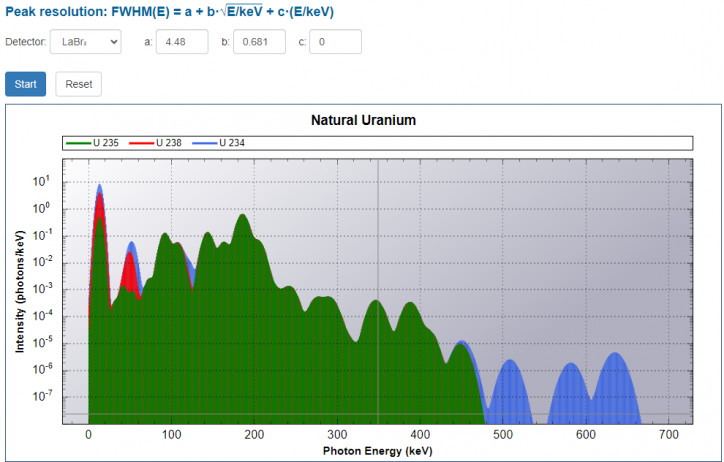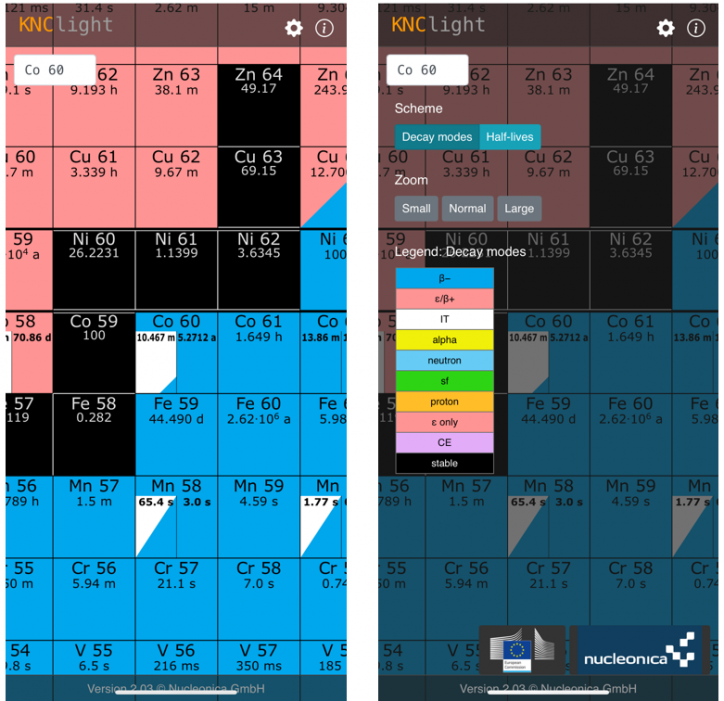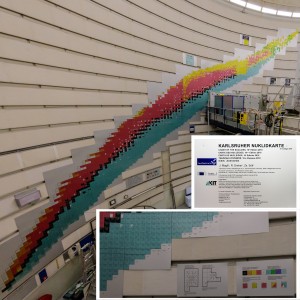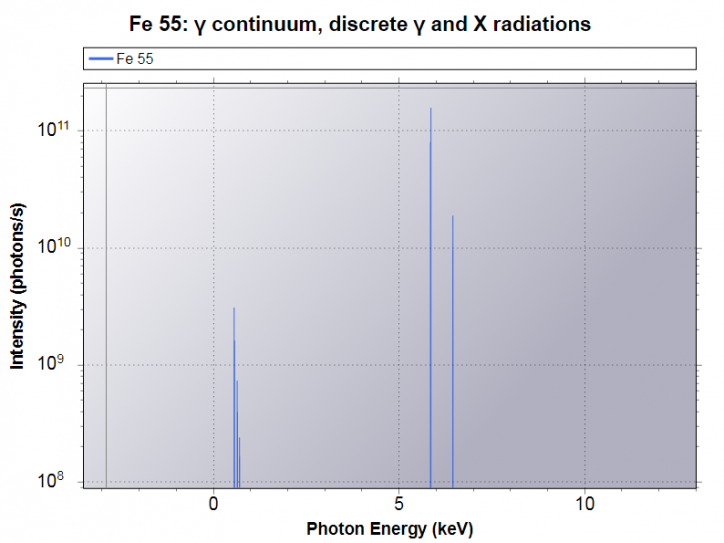Happy New Year!
2023 in Review
Dear Nucleonica Users,
Since our last newsletter, there have been a variety of updates including new
applications and new products at Nucleonica.
 Nucleonica Newsletter 2024
Nucleonica Newsletter 2024
Nucleonica Online Applications Update
In 2022 and 2023 we have developed our new Shield Thicknesses Application.
Shield attenuation thicknesses are required for routine calculations in nuclear
science, radiation protection, nuclear medicine, etc. The new application can be
used to calculate the shield layer thickness for a range of shield materials. It is
also possible to include parameters such as the threshold energy, the nuclear data
used, the buildup factors and the inclusion of daughters.
Karlsruhe Nuclide Chart, new 11th Edition 2022
The 11th Edition 2022 of the “Karlsruher Nuklidkarte” has been launched and
contains new and updated radioactive decay and thermal neutron cross sections
data on 1035 nuclides (82 new nuclides) not found in the previous (2018) edition.
In total, nuclear data on 4122 experimentally observed ground states and isomers
are presented. The new chart can be ordered in English, French, German and
Spanish via our online shop http://nuklid.shop.
Nucleonica’s Periodic Table of the Elements, new 1st Edition
We have also launched the first edition of Nucleonica’s Periodic Table of the
Elements, a new product to complement our Karlsruhe Nuclide Chart in its various
forms and sizes. The data in the table is scientifically approved by Nucleonica and
contains the information on the atomic number, chemical symbol and element
name. In addition, latest data are given on the relative atomic weight, density,
melting and boiling points, ionisation potential and aggregate condition (solid,
liquid, gas) at room temperature for 118 elements.
The Periodic Table of the Elements is colour coded by type of element (e.g.
type of metal, noble gases, halogens etc.). It is is available in printed form on
our web shop https://nuklid.shop/ in four languages: English, German, French
and Spanish and printed in three sizes: A3, A1 and A0.
Dedicated Training Courses
• Nucleonica Training Course on Nuclear Security
27-28 September 2023 & 29-30 September 2022
Bundesamt für Strahlenschutz (BfS)
Nucleonica applications (Decay Engine, Dosimetry & Shielding, Gamma
Spectrum Generator, Cambio, and WESPA) together with cases studies
concerning Co60 sources.
• Nucleonica Training Course on Core Applications
20-21 April 2022
Ministerium für Umwelt, Klima und Energiewirtschaft (UM) &
Landesanstalt für Umwelt, Messungen und Naturschutz Baden Württemberg (LUBW)
Introduction to Nucleonica Applications and Tools with exercises
Launch of the Nucleonica Chat
The new Nucleonica Chat is a communication software tool developed by the
Nucleonica Team to provide easy and spontaneous communication between
members of the Nucleonica community (either online or offline) while using the
Nucleonica apps. Users may exchange results of calculations, their experience with
applications and so on through short messages reinforced by emojis or send files
up to a length of 2 MB while working with Nucleonica.
Team News at Nucleonica
Niels Magill, son of Joseph Magill (founder) has joined the Nucleonica Team as
Managing Director and will be the main point of contact for sales enquiries,
premium licenses, finance and collaborations. Prior to joining Nucleonica, Niels has
worked at Sanofi and Google. He holds a B.Sc. in Management from the University
of Glasgow and an M.Sc. in Finance from the Frankfurt School of Finance.
We Welcome your Feedback
We value the many suggestions and proposals which we received during past year
from all partners and users that helped us improve the applications. The
Nucleonica Team would like to thank you for your continued support.
Thank you
The Nucleonica Team would also like to thank the many organizations which have
signed up for Premium use of Nucleonica during 2023 and we look forward to
working with you in 2024.
We would like to thank everyone who has contributed during 2023. Special thanks
also to Dr. Zsolt Sóti from the JRC for collaboration on the new 11
th edition (2022) of the Karlsruhe Nuclide Chart. From CERN we acknowledge the collaboration of
Mr. Philippe Bertreix on the e-Ship++ application.
Best wishes for 2024,
Sincerely yours,
Joseph Magill & Niels Magill
Managing Directors
Nucleonica Newsletter 2024
 Mixtures created using a particulat data library can be converted to another lobrary.
Mixtures created using a particulat data library can be converted to another lobrary.





